
How much it costs to rent a lawn aerator depends on what kind you rent and how long you rent it for. Read on for the full details.
Knowing your grass is the key to keeping it green


Different grasses grow in different climates: cool-season grasses grow in the northern half of the country, while warm-season grasses grow in the southern half.
The color, size, and shape of a blade of grass will also help you determine what you’re working with.
Most warm-weather grasses are light to medium green, save for dark green exceptions like Bermuda and St. Augustine.
While most cool and warm grass varieties are pointed, Centipede and Kentucky Blue grass have boat-shaped tips.
Lawn grass isn’t a one-size-fits-all solution—unless, of course, you install artificial grass that’s so resilient it could probably survive on Mars. Down here on Earth, you’re likely wondering, “What kind of grass do I have?”
The type of grass tells you a lot about your lawn, particularly when it comes to its maintenance needs. If you plant the wrong kind, it truly will be greener on the other side. If you need help determining your grass type, consult a lawn care professional near you. Here’s how you can tell the difference.
Ever wondered what type of grass you have? Though there’s a few ways to identify lawn grasses, climate is usually the first clue. If your grass is not dying back to the point it needs seeding every year, then you’ve probably planted the correct grass for the climate.
It will fall into one of two categories:
Cool-season grasses: These grow best in the northern half of the United States because they can withstand large temperature fluctuations. They tend to die out in warm southern temperatures.
Warm-season grasses: These struggle to survive in cold northern winters, but thrive during hot southern summers.
There is a small transitional zone between regions where either cool-season grass or warm-season grass can thrive, but typically, the grass matches the weather.
Once you know the climate, you should dive into the physical features of your grass. Grass will have different colors, blade shapes, vernation shapes, and growth patterns.
This includes:
Pointed, rounded, or boat-shaped blade tips
Narrow to thicker blade widths
Vernation that is either rolled like a scroll or folded like a birthday card
Growth that’s in clear bunches or creeps out from stems below or above ground
Color that is dark blue-green to light green
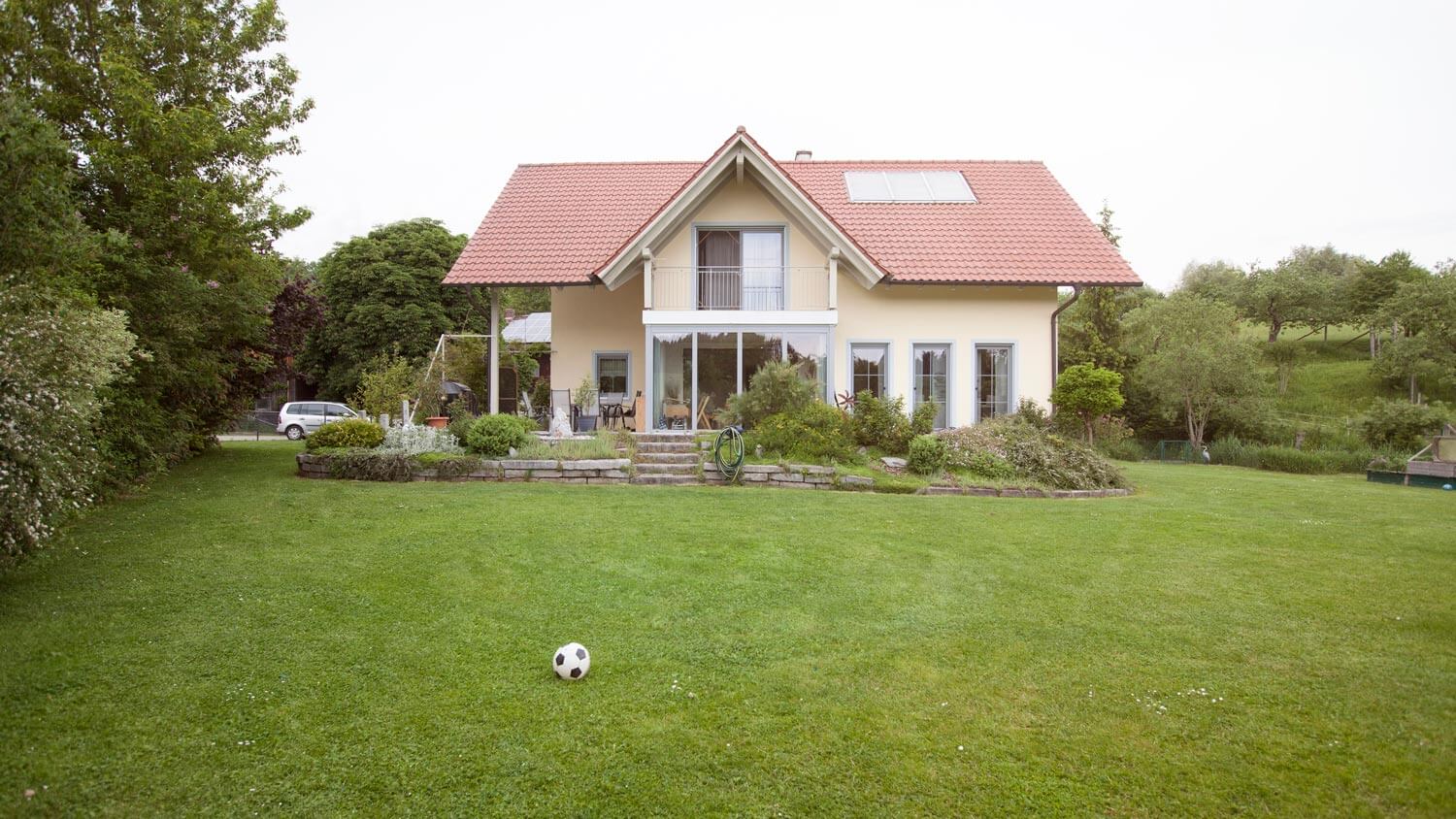
Your local lawn care service should be able to help you identify your lawn grass. Most of the time, it will probably be a mix of grass seeds rather than a single type. Here are some of the most popular cool-season grasses.
| Fine Fescue | Gray-green | Pointed |
| Tall Fescue | Light green | Pointed |
| Turf-Type Tall Fescue | Medium to dark green | Pointed |
| Kentucky Bluegrass | Blue-green | Boat-shaped |
| Ryegrass | Medium to dark green | Pointed |
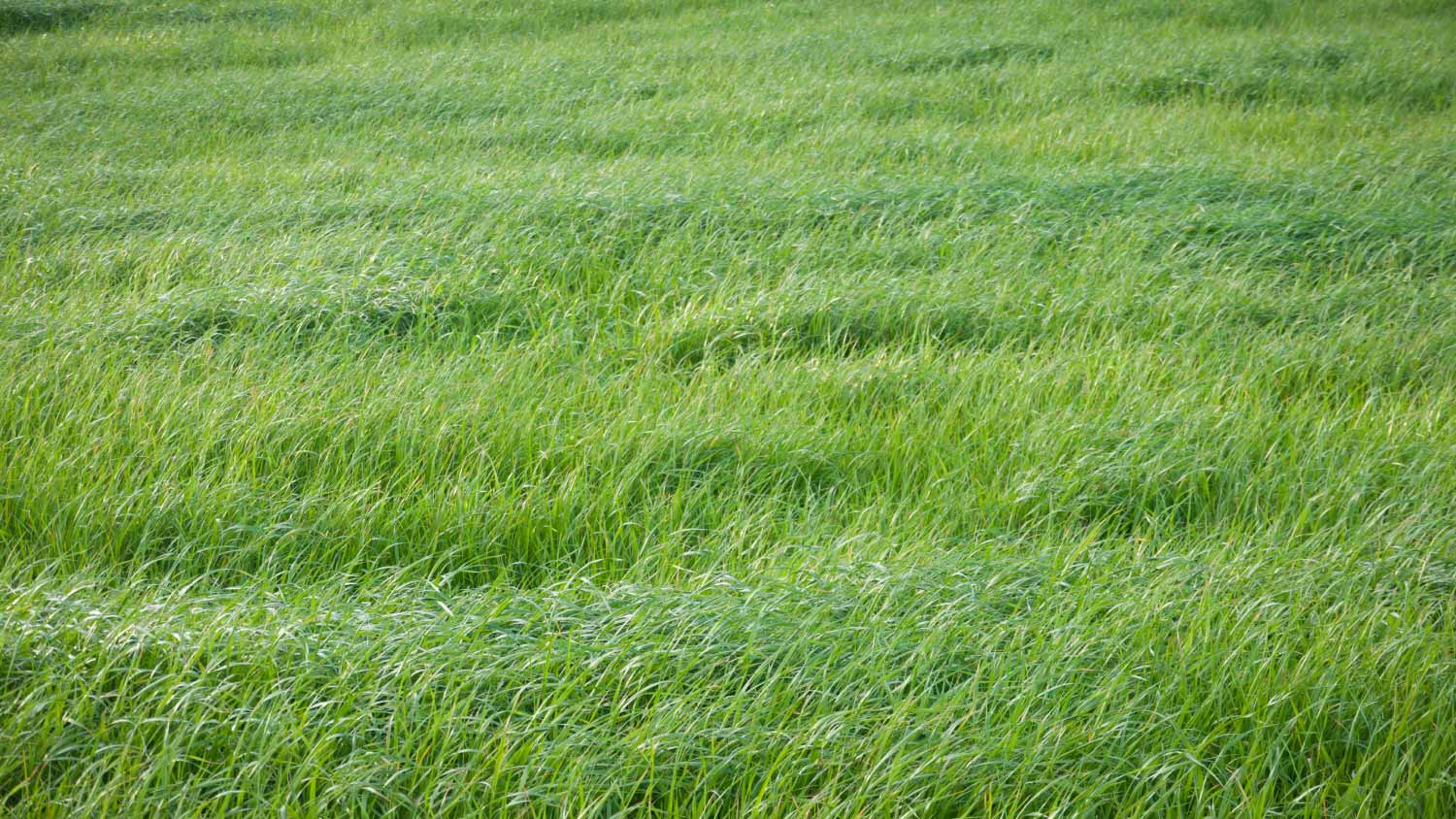
You’ll often find fine fescue in grass seed mixes for shady yards because it can tolerate heavy shade better than most other cool-season grasses. Even without much sunlight, this variety is a fast grower, but needs more water than your average lawn. Some homeowners with fine fescue prefer using a local lawn irrigation service to help.
Color: Gray-green
Blade width: Thin
Tip shape: Pointed
Vernation: Folded
Growth: Bunching or creeping
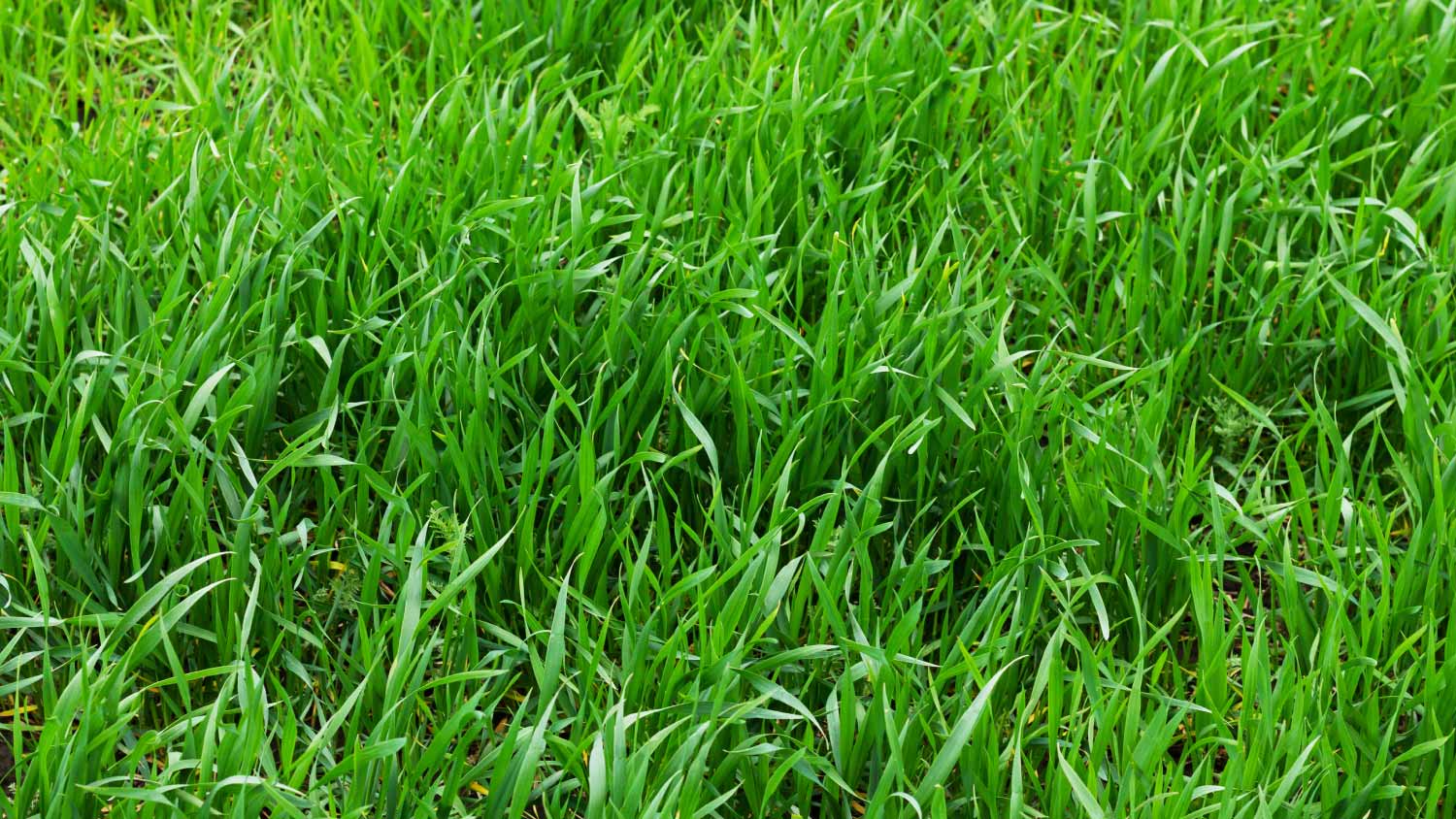
Tall fescue is a lawn for utility. This grass is highly durable and tends to do well with the most basic lawn care. It’s also one of the more shade tolerant cool-season grasses, and certain varieties can withstand extreme heat and droughts.
Color: Light green
Blade width: Medium to thick
Tip shape: Pointed
Vernation: Rolled
Growth: Bunching
Though it’s a cool-season grass, you may actually find turf-type tall fescue in warmer climates because it’s very resilient to heat. This is a favorite for athletic fields because it can tolerate a lot of foot traffic.
Color: Medium to dark green
Blade width: Thin to medium
Tip shape: Pointed
Vernation: Rolled
Growth: Bunching
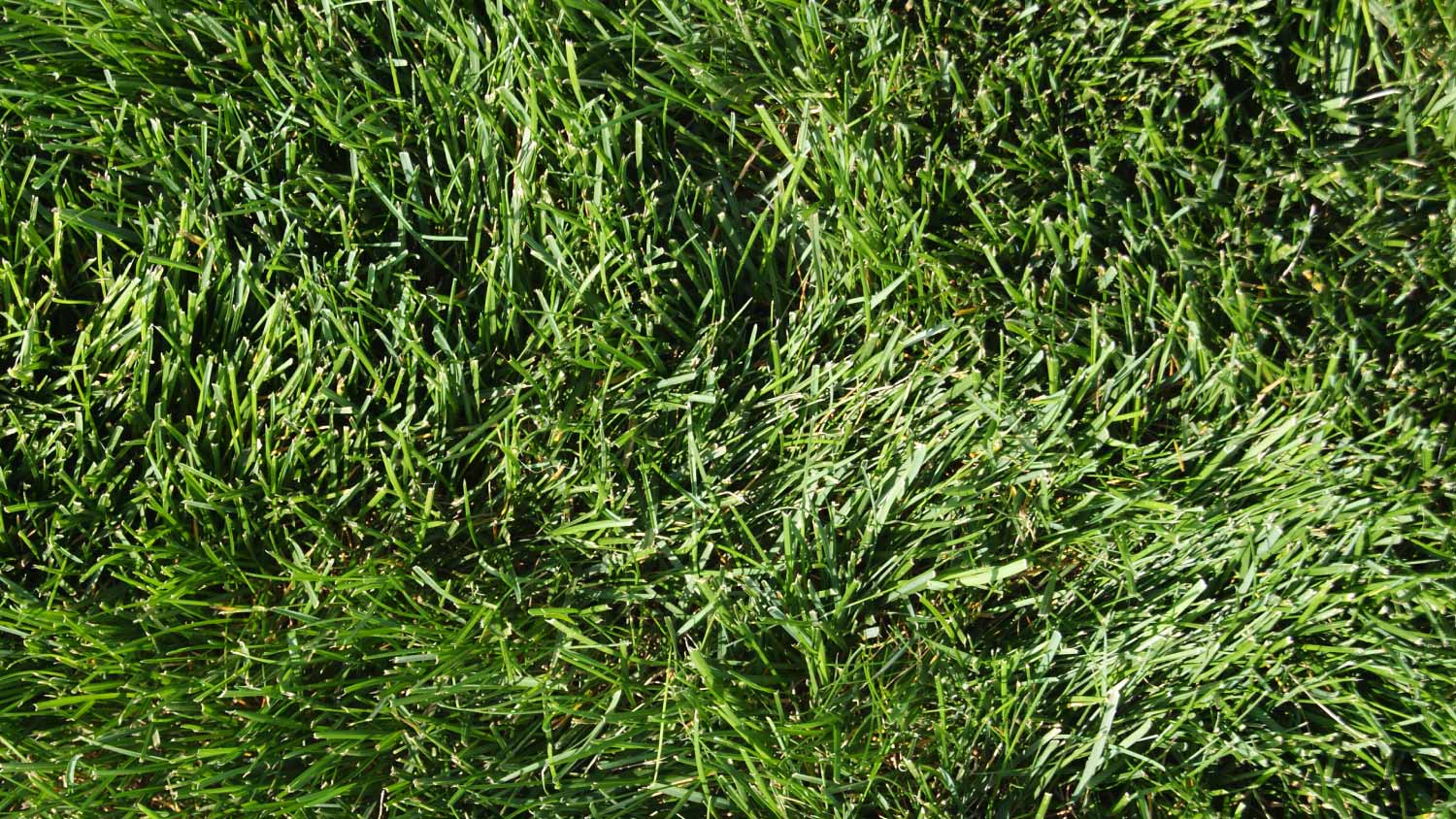
Kentucky bluegrass is one of the most popular grasses in the northern United States because it has remarkable cold hardiness. Though it grows aggressively, it needs full sunlight to thrive.
Color: Blue-green
Blade width: Thin to medium
Tip shape: Boat-shaped
Vernation: Folded
Growth: Creeping
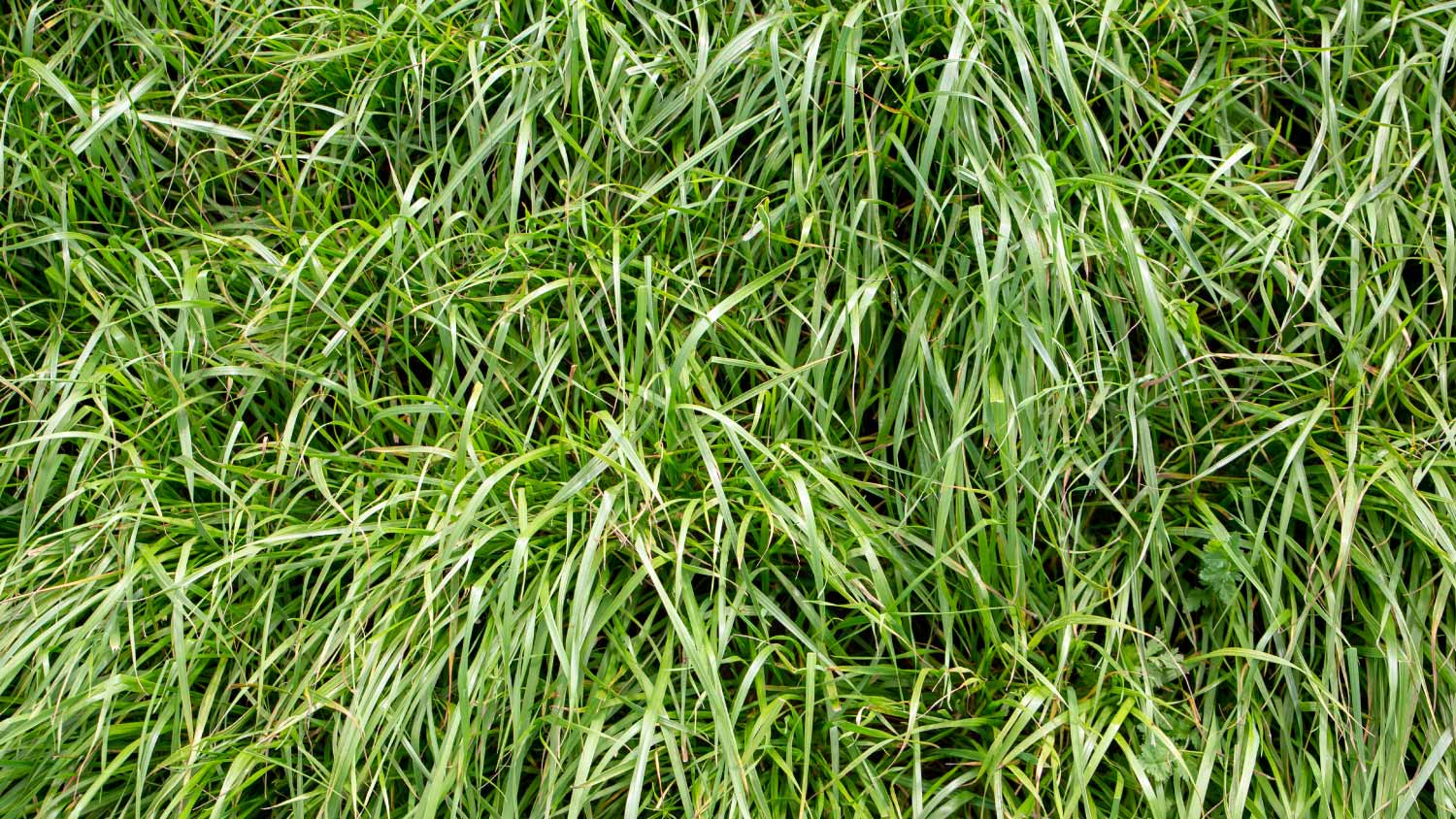
Ryegrass is distinctive because it has a shiny finish that leaves a whitish residue when mowed. It’s one of the fastest germinate grasses on the market, and will return year after year as long as it’s healthy and properly maintained.
Color: Medium to dark green
Blade width: Thin to medium
Tip shape: Pointed
Vernation: Folded
Growth: Bunching
If you live in a state with a warmer climate, you probably have one (or a couple) of the following grass varieties.
| Bermuda Grass | Dark green | Pointed |
| Zoysia grass | Light green to medium | Pointed |
| Centipede grass | Light green | Pointed or boat-shaped |
| Bahia grass | Light green | Pointed |
| St. Augustine grass | Dark green | Rounded |
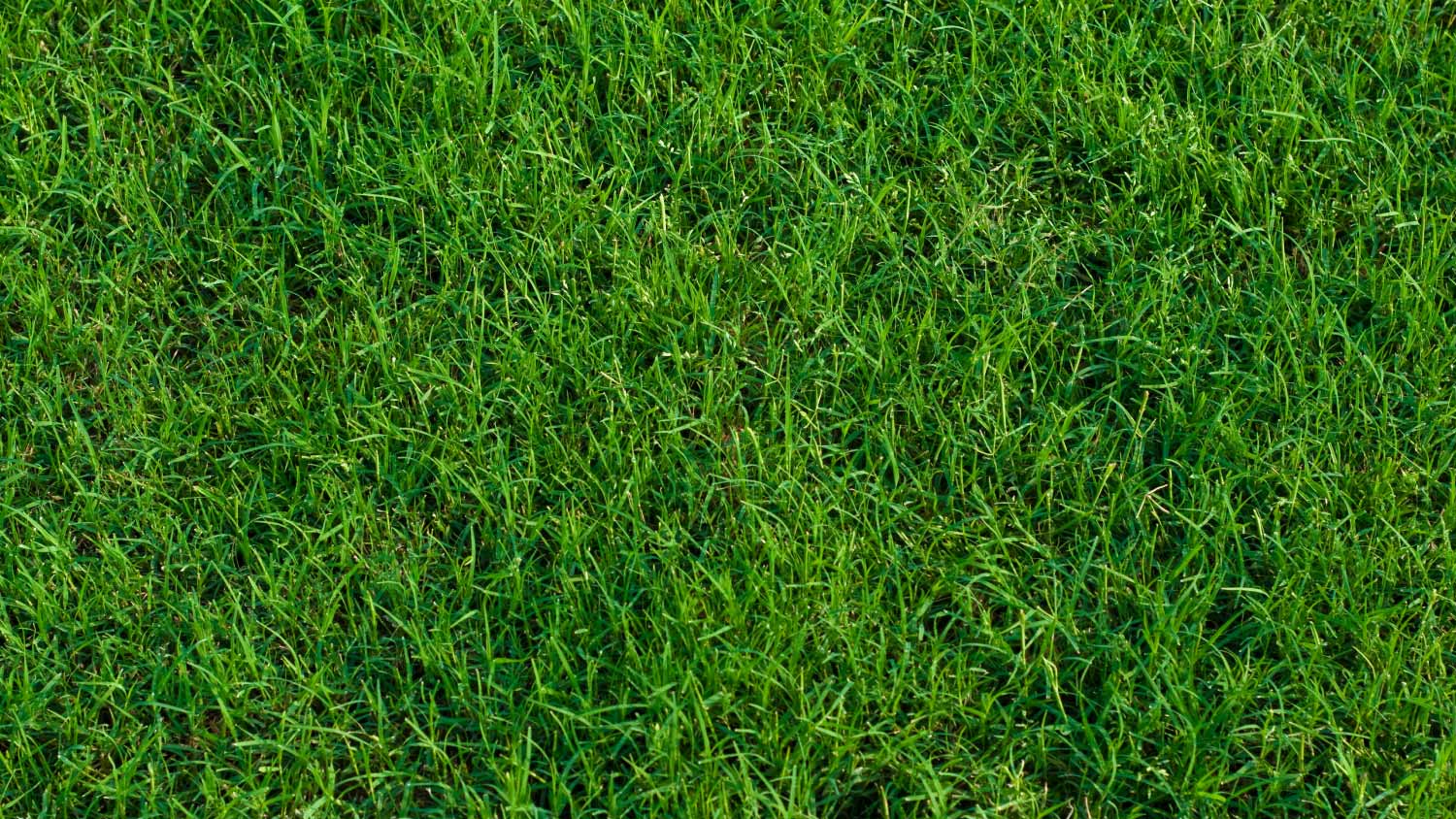
Bermuda grass is one of the best lawns if you want a close crop. This variety can tolerate low mowing heights, which makes it a popular choice for golf courses. Unfortunately, it’s not a low-maintenance grass. Bermuda grass requires a lot of fertilization, watering, and mowing.
Color: Dark green
Blade width: Thin
Tip shape: Pointed
Vernation: Folded
Growth: Creeping
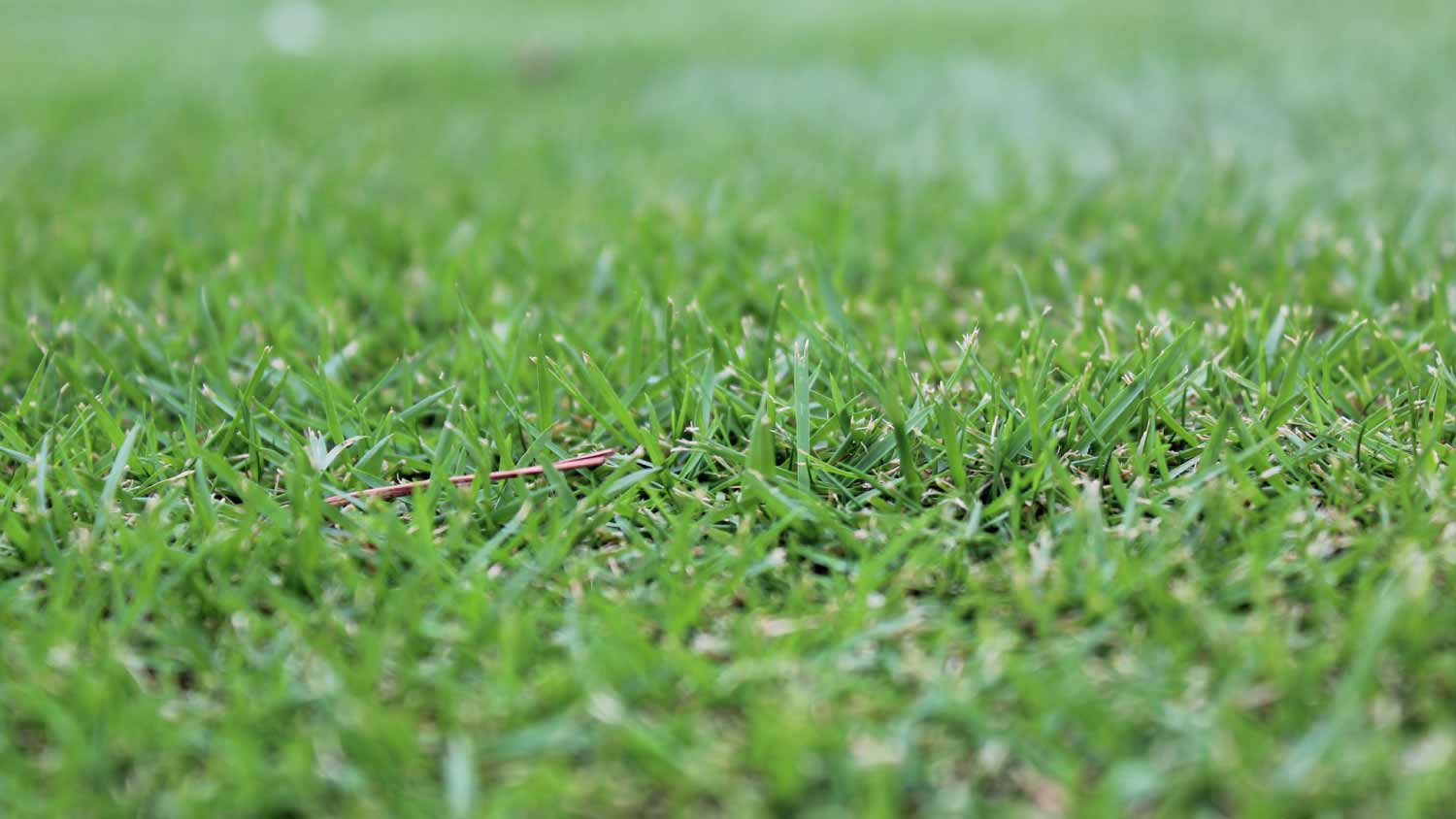
Zoysia grass is known for its hardiness. It has a longer green season than other varieties and can stand up to heat and cold better than other warm-season grasses. This makes zoysia grass an excellent choice for a transitional area.
Color: Light green to medium
Blade width: Thin to medium
Tip shape: Pointed
Vernation: Rolled
Growth: Creeping
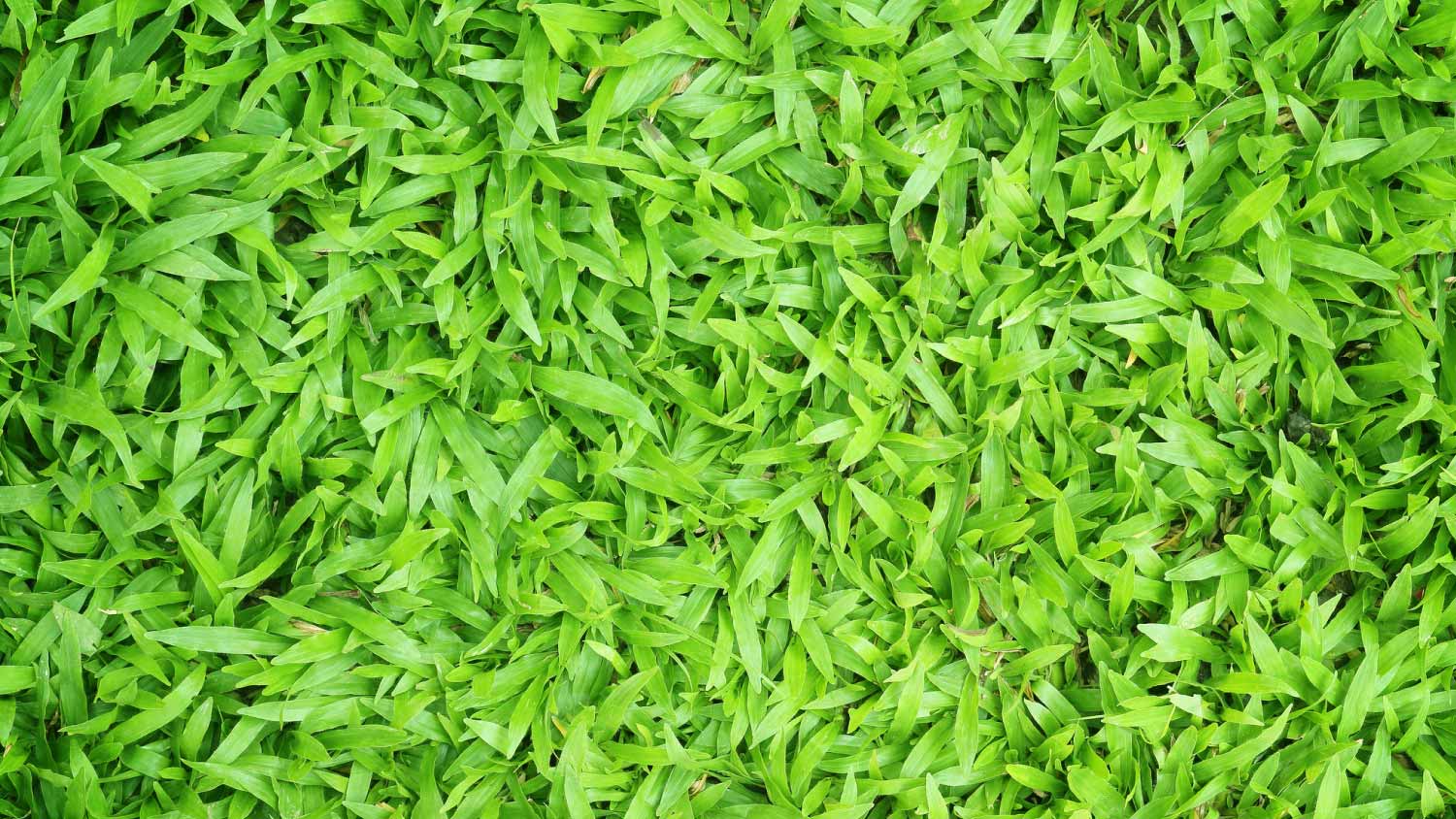
Want a low-maintenance lawn? Say hello to centipede grass. This is a notorious slow-grower, which means less mowing. It prefers sandy, acidic soil and thrives across the southeast, southern coastal plains, and areas of Texas.
Color: Light green
Blade width: Medium
Tip shape: Pointed or boat-shaped
Vernation: Folded
Growth: Creeping
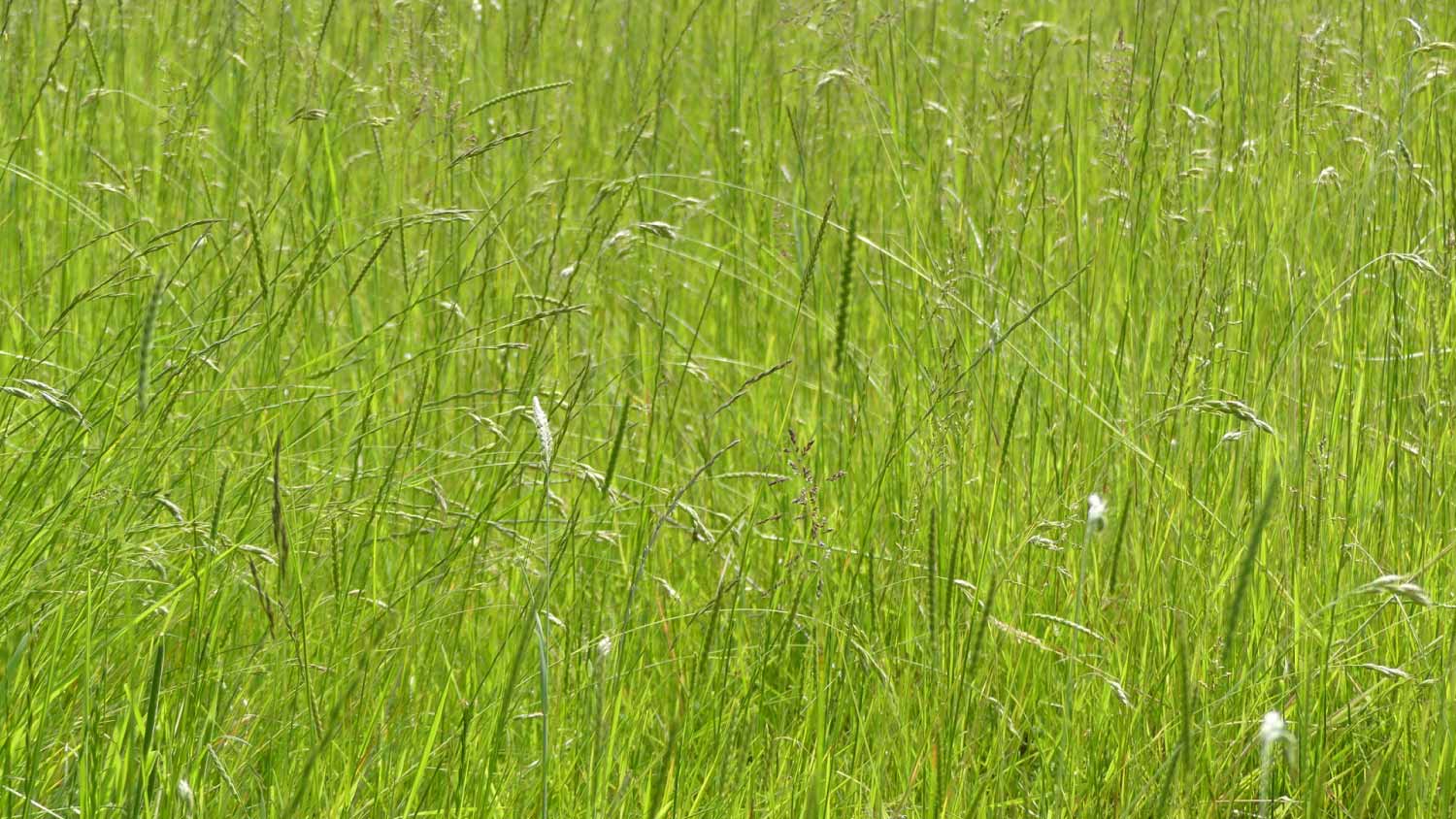
Bahia grass is a champion at tolerating droughts and high temperatures. Typically, you’ll find it hanging out in humid, sandy-soiled areas of the southeast.
Color: Light green
Blade width: Medium to thick
Tip shape: Pointed
Vernation: Rolled or folded
Growth: Creeping
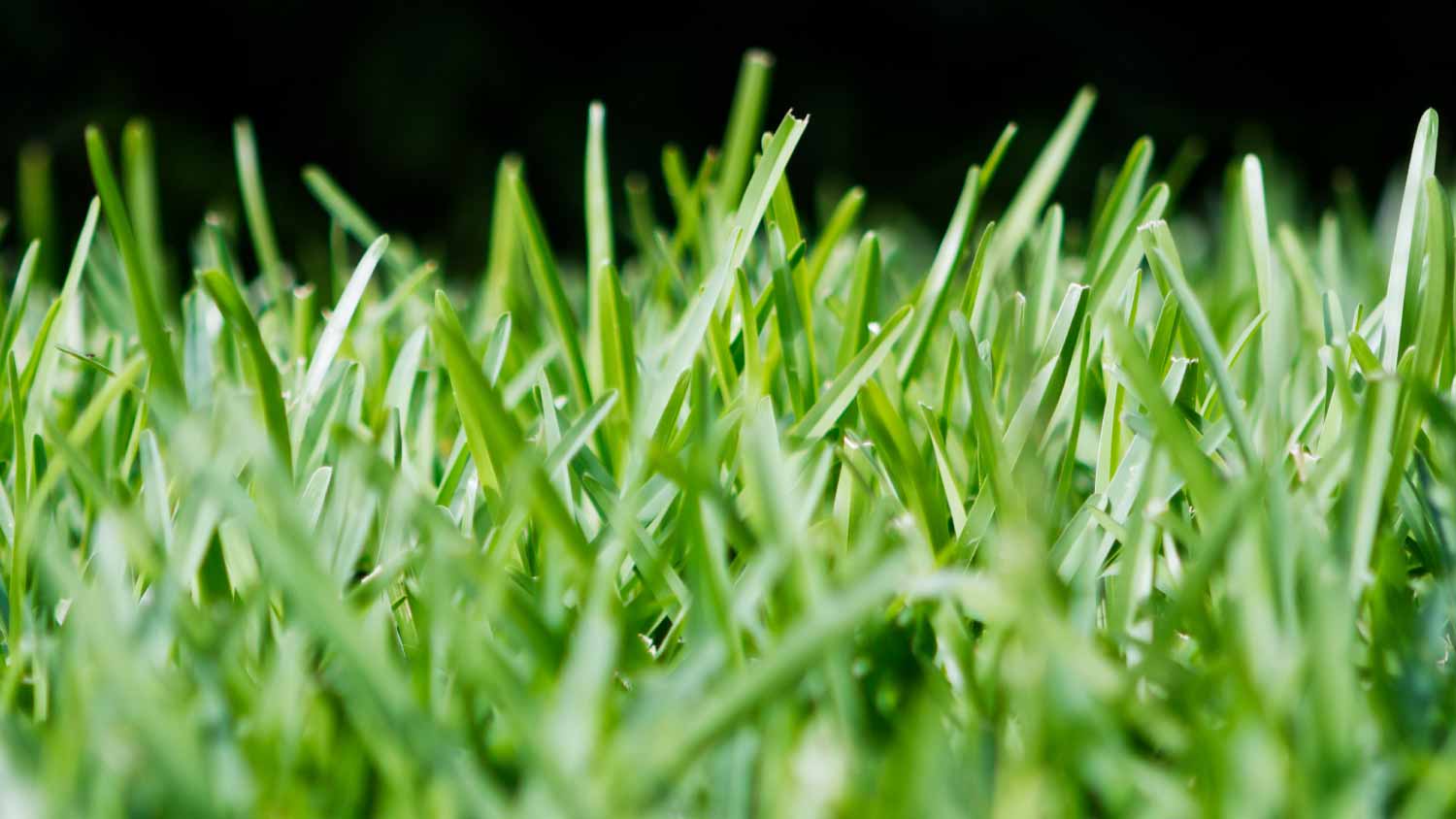
To some, St. Augustine grass is a weed. To others, it has adorable chunky blades. This grass thrives in warm climates like Florida and the Gulf Coast. Sometimes, you’ll find it in a California backyard. The defining feature are the blades, which are much thicker than most types of lawn grass. This is a lawn you’ll need to water frequently.
Color: Dark green
Blade width: Thick
Tip shape: Rounded
Vernation: Folded
Growth: Creeping
From average costs to expert advice, get all the answers you need to get your job done.

How much it costs to rent a lawn aerator depends on what kind you rent and how long you rent it for. Read on for the full details.

Removing an old lawn is often necessary to plant new grass or build a new outdoor structure. Find out what to budget for your lawn removal cost.

The cost to reseed a lawn can vary depending on the size of your yard and the condition of the soil. We’ll help you figure out the true cost of reseeding or overseeding your lawn, along with whether or not you should hire a professional.

A step-by-step guide for dethatching your lawn if you have yellow or brown grass caused by thick debris and organic matter in your yard.

Does mowing less sound appealing? Here are the no mow grass pros and cons and alternative choices for a lawn that requires less maintenance.

Does sugar help your lawn? In some cases, yes. Keep reading to learn how you can use this sweet treat to kill weeds and keep the grass green.